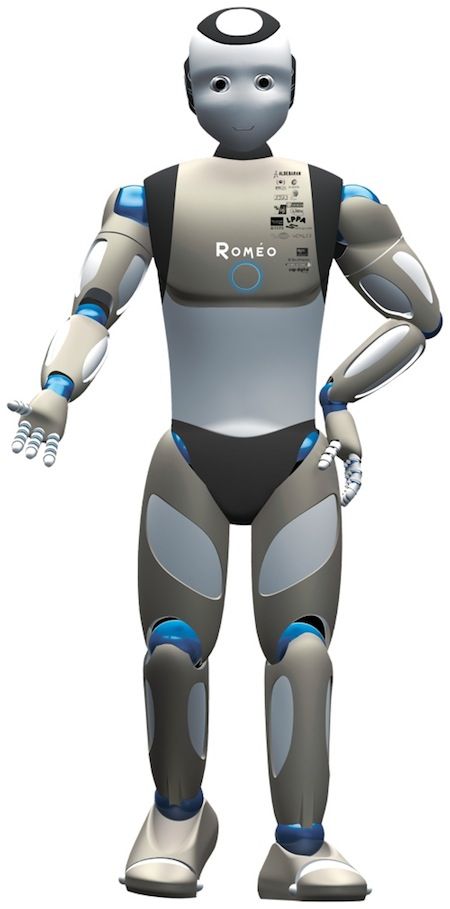Aldebaran launching 1.4m high humanoid at EUR 250k
Aldebaran launching 1.4m high humanoid at EUR 250k
intended for elderly and disabled wealthy individuals who will prefer to spend their time and money in the company of a robot with soft torso
http://spectrum.ieee.org/automaton/robo ... obot-romeo

http://spectrum.ieee.org/automaton/robo ... obot-romeo

But most humanoid robots use motor and gears to power their joints, and these mechanisms are not backdrivable—due to energy losses in the gears and you can’t relate the electrical current in the motors to force. That’s why they need force sensors if you want to move in a compliant way; it’s called active compliance. Romeo is different. It has no gears. We transmit the motion from the motors to the joints using screws and cables. This system is backdrivable.
Since when is a screw not a gear? I guess they are using a ballscrew, but are ballscrews really all that backdrivable compared to a spur based gearbox?
http://www.roton.com/application_engineering.aspx#11
Seems like a regular spur gear setup can achieve similar backdriveability efficiency.

